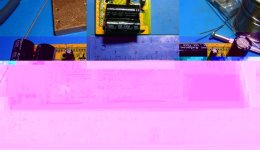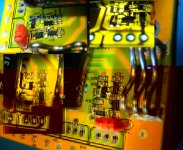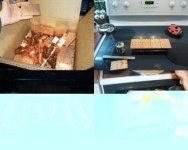Doctorbass
100 GW
Jeremy, thanks for your calculation.. that make sense to me and this is also encuraging!! 
I also remembered by you that to paint the cover case in black would help!!.. that make the cover case like a black body!! a perfect heat exchanger!
I'll do some of the mod you suggested like the mica mod...
You know what..!! this is my job to work with IR these last months..!!
this is my job to work with IR these last months..!!
I have a job as a optical technologist at INO... (http://www.INO.ca)
I work on a camera project for NASA and Argentina and (CSA) Canadian Space Agency that will go in a satellite to explore the temp of the earth and forest burn and ocean temperature change for climate change!!!
We built and test two Long Wave and Mid Wave camera for that..
They are the first IR camera in the world with these caracteristics that dont need any cooling inside!! great for satelite low power consumption!!! 3milion $ !!
So i know about black body science ! 8)
8)
Here is 2 recent articles: http://www.smartmoney.com/news/pr/?story=PR-20090317-001092-0945&hpadref=1
http://lejournaldequebec.canoe.ca/j...egional/archives/2009/03/20090317-195437.html
Curiouslu a black anodized finish give lower result than a normal blach paint.. I tested alot of balck coat during these last monmth for that project!!
Doc
I also remembered by you that to paint the cover case in black would help!!.. that make the cover case like a black body!! a perfect heat exchanger!
I'll do some of the mod you suggested like the mica mod...
You know what..!!
I have a job as a optical technologist at INO... (http://www.INO.ca)
I work on a camera project for NASA and Argentina and (CSA) Canadian Space Agency that will go in a satellite to explore the temp of the earth and forest burn and ocean temperature change for climate change!!!
We built and test two Long Wave and Mid Wave camera for that..
They are the first IR camera in the world with these caracteristics that dont need any cooling inside!! great for satelite low power consumption!!! 3milion $ !!
So i know about black body science !
Here is 2 recent articles: http://www.smartmoney.com/news/pr/?story=PR-20090317-001092-0945&hpadref=1
http://lejournaldequebec.canoe.ca/j...egional/archives/2009/03/20090317-195437.html
Curiouslu a black anodized finish give lower result than a normal blach paint.. I tested alot of balck coat during these last monmth for that project!!
Doc




